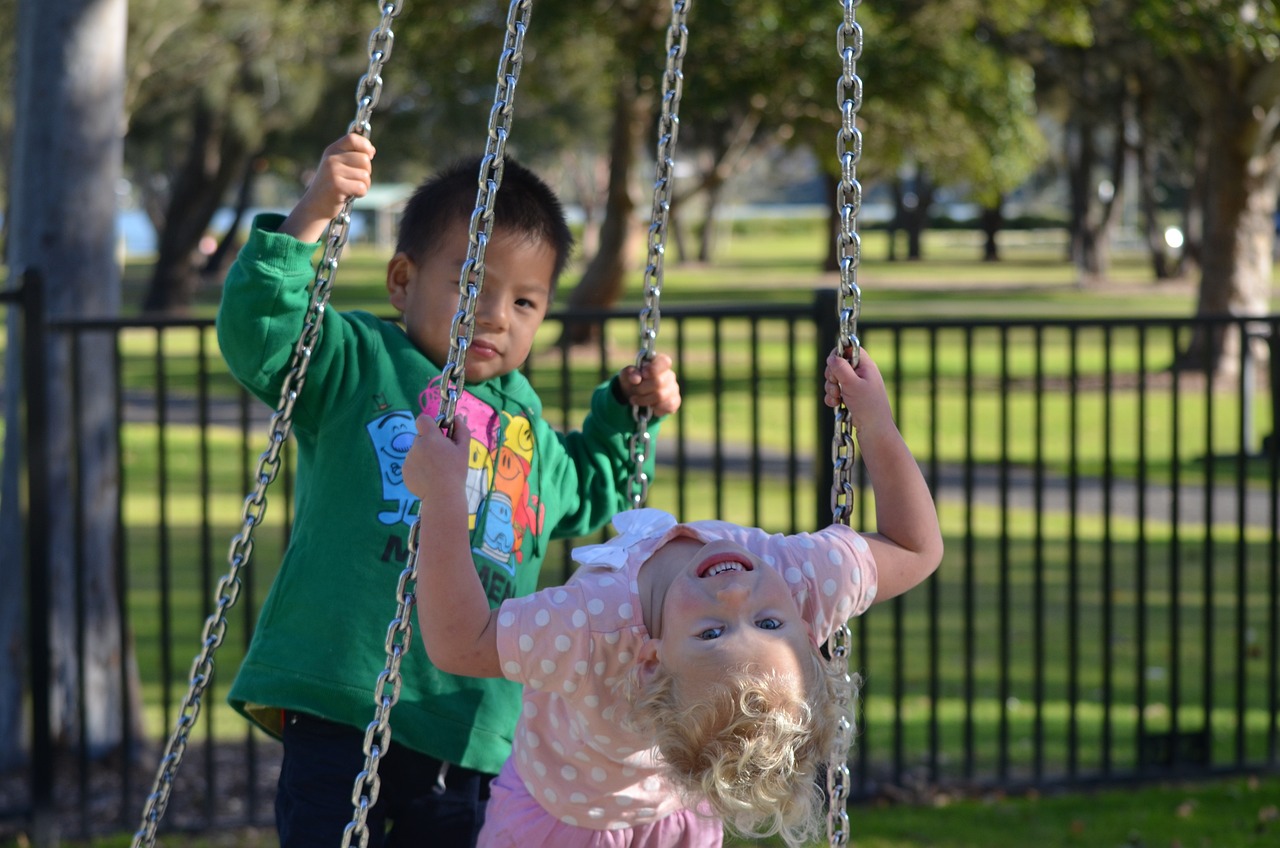By Rashaad Young
One of the times children grow and develop gross motor skills is during unstructured play times, such as playing with family or friends at home, in the community gym, at the park, or at school during outdoor play. These are times when children use their imagination to explore and acquire new gross motor skills without specific directions they must follow. Unstructured play times are beneficial for young children because they allow them to test their own limits and try new things when it comes to their gross motor development. While this type of unstructured play is good for young children, challenging behavior can occur if children are unsure of what to do, they don’t have the social skills to take turns with the available play equipment or gross motor materials, or they struggle with handling big emotions should these occur. In response, adults (teachers and parents) may try to remove or exclude a child from unstructured play time to correct the behavior problems, versus structuring activities or teaching skills that are needed to be successful.
Exclusion can be problematic for several reasons. First, frequently denying a child access to unstructured playtime could potentially impact their development. Second, excluding children from unstructured play, whether at school or at the park with friends or family, can affect how a child learns or does not learn to manage their emotions, problem-solve, and communicate. However, there are a few alternatives that parents and teachers can use to encourage positive behavior, during unstructured play times.
- Build positive relationships: Research indicates that, “children who enjoy supportive relationships with adults are more responsive to them and more likely to cooperate, follow directions, and develop self-confidence” (Yang et al., 2022, p. 26). Playing games with children during outdoor time, such as Red Light Green Light, Duck Duck Goose, or tag, and discussing favorite outdoor games not only supports gross motor and other areas of development, but it can facilitate positive adult-child relationships during fun, engaging activities.
- Create Supportive Environments: “Children are more likely to exhibit challenging behaviors in unstructured settings (like a playground) …” (Yang et al., 2022, p. 26). Practitioners can arrange play areas in ways that support positive behavior. For example, they might very explicitly teach the expectations for using the playground equipment and provide visual supports near the equipment to remind children of these expectations (i.e., a child sitting on the swings, children allowing space between peers when climbing the slide). Practitioners can find other ideas for creating supportive environments in the Summer 2022 edition of Young Children, specifically the article, “DAP and Playful Learning Equitable Approaches.”
- Provide Social and Emotional Supports: Each child in a group or class is unique. Thus, accommodations and explanations of the rules should be provided based on the child’s needs. For example, it might be important to have an adult available to help a child who has trouble communicating and easily becomes upset when people don’t understand them, should the need arise. This adult could serve as a bridge to other students and help the child acknowledge and label their emotions and prevent challenging behavior. Also, a caregiver might support their child’s needs when at the park and help their child have fun, engage with other children, and express themselves positively.
- Reinforce positive choices: Most children benefit from receiving positive descriptive feedback. Remember to verbally reinforce positive behavior, especially when children are engaging in it independently, after being taught new skills.
You can find links to helpful Tip Sheets and Resources from the Illinois Early Learning Project in this document.
Reference
Yang, H. W., Ostrosky, M. M., Favazza, P. C., Akamoglu, Y., Cheung, W. C., & Aronson-Ensign, K. (2022). Recess matters! Preventing and reducing children’s challenging behavior on the playground. Young Children, (77)2, 24-34.
Image from Pixabay.com, CC0













